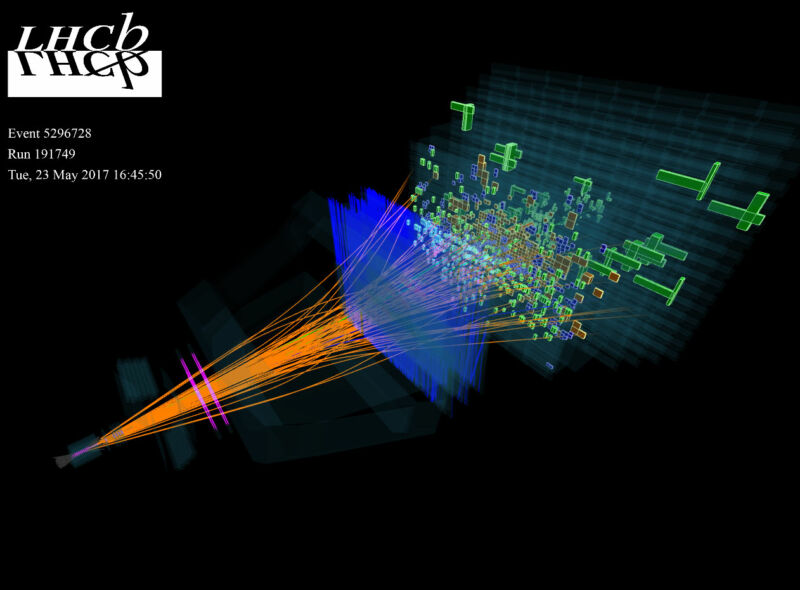
Enlarge / Particle tracks from the LHCb detector. (credit: Brookhaven National Lab)
The quark model was an intellectual revolution for physics. Physicists were faced with an ever-growing zoo of unstable particles that didn’t seem to have a role in the Universe around us. Quarks explained all that through an (at least superficially) simple set of rules that built all of these particles through combinations of two or three quarks.
While that general outline seems simple, the rules by which particles called “gluons” hold the quarks together in particles are fiendishly complex, and we don’t always know their limits. Are there reasons that particles seem to stop at collections of three quarks?
With the advent of ever-more powerful particle colliders, we’ve found some indications that the answer is “no.” Reports of four-quark and even five-quark particles have appeared in different experiments. But questions remain about the nature of the interactions in these particles. Now, CERN has announced a new addition to growing family of tetraquarks, a collection two charm quarks and two anti-charm quarks.
Read 12 remaining paragraphs | Comments
Source: Ars Technica – CERN has discovered a very charming particle
